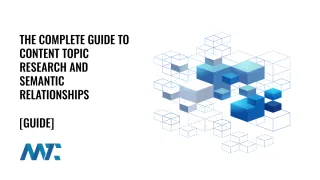Content distribution is the process of sharing and promoting your content (such as blog posts, videos, social media posts, etc.) through various channels to reach a wider audience. A content distribution strategy is a plan that outlines how you will distribute and promote your content across paid, owned, and earned channels (POE) to achieve your marketing goals.
Benefits of Content Distribution
There are several benefits of incorporating content distribution as part of your overall marketing strategy. Here are some of the key benefits:
- Increased visibility: By distributing your content across various channels, you can increase your brand’s visibility and reach a wider audience.
- Improved SEO: When you distribute your content on external platforms, such as social media and other websites, it can help to improve your search engine optimization (SEO) by generating backlinks and driving traffic to your website.
- Greater brand awareness: Content distribution can help to build brand awareness and establish your brand as an authority in your industry.
- Enhanced engagement: Distributing your content across various channels can increase engagement with your target audience, as they may be more likely to engage with your content on the platform where they spend the most time.
- Improved lead generation: By increasing visibility, improving SEO, and building brand awareness, content distribution can help to generate more leads for your business.
- Greater ROI: By distributing your content across multiple channels, you can maximize your return on investment (ROI) by reaching more people with the same content.
Overall, content distribution is an essential component of any successful marketing strategy. By effectively distributing your content, you can increase your brand’s visibility, improve your SEO, and generate more leads for your business, ultimately driving revenue and growth.
Content Distribution Strategy
An example content distribution strategy for a company looking to repurpose content and reach new audiences might involve the following steps:
- Audit existing content: Analyze your company’s existing content library to identify high-performing pieces and topics that resonate well with the target audience. This could include blog posts, videos, podcasts, whitepapers, and other resources.
- Determine audience segments: Identify different audience segments the company wants to target and understand their content preferences, consumption habits, and channels they use most often.
- Choose content formats: Based on the audience preferences and the nature of the content, decide on the formats that will work best for repurposing the content. Examples include blog posts, videos, podcasts, infographics, social media posts, and email newsletters.
- Repurpose content: Transform the existing content into the chosen formats. This may involve rewriting, summarizing, or extracting key points from the original content. Ensure that the repurposed content is optimized for each platform and tailored to the target audience.
- Optimize for SEO: Ensure that the repurposed content is optimized for search engines by using relevant keywords, creating compelling meta descriptions, and including internal and external links.
- Schedule content distribution: Develop a content distribution calendar that outlines when and where the repurposed content will be shared. This should include both organic and paid channels, such as social media, email marketing, content syndication, and influencer partnerships.
- Promote content: Share the repurposed content on the appropriate channels, using targeted messaging and engaging visuals. Have your PR team pitch the content to relevant sites. Utilize both organic and paid promotional methods to maximize reach and visibility. Tip: Share it through email signatures as well!
- Engage with the audience: Monitor the channels where the content is shared and engage with the audience by responding to comments, answering questions, and addressing feedback. Encourage social sharing and user-generated content to further increase reach.
- Monitor and measure performance: Track the performance of the repurposed content using analytics tools and metrics such as page views, social shares, engagement rates, and conversions. Identify which content and channels perform best and adjust the strategy accordingly.
- Iterate and refine: Based on the performance data, make improvements to the content and distribution strategy. Continuously test new formats, channels, and promotional tactics to optimize results and reach new audiences.
By following these steps, your company can effectively repurpose and distribute its content, expanding its reach and engaging with new audience segments.
